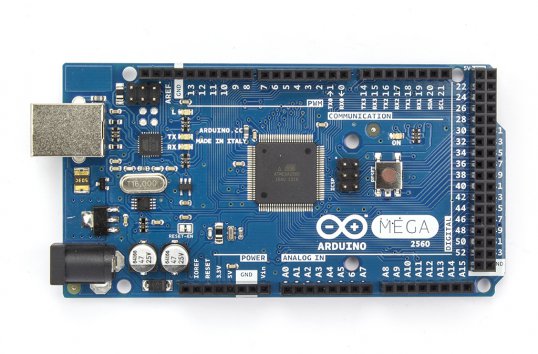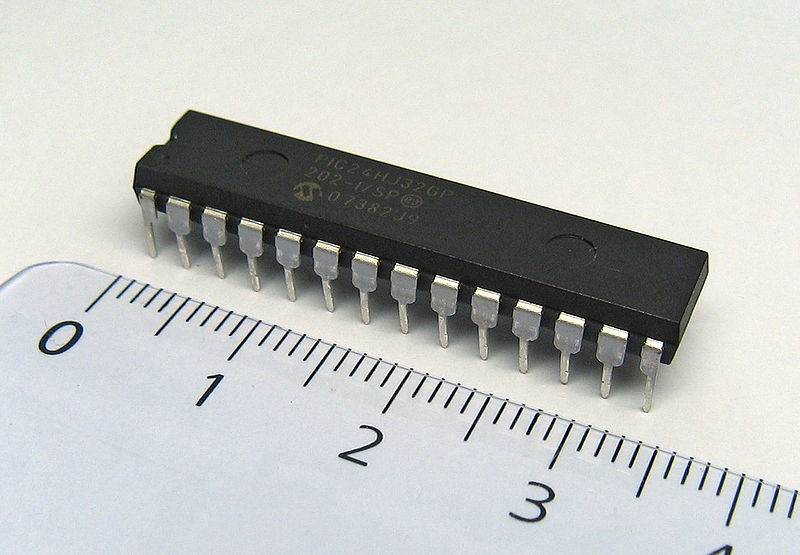
I must be a terrible person: last couple of weeks I’ve seen the most impressive effects switcher units, however, none of them could perfectly suit my needs. Things like loop switchers aren’t cheap (at least not the decent ones), so the one I’ll be buying has to be exactly what I need. At least it has to compensate for the guilty feeling that emerges from giving in to the GAS… again.
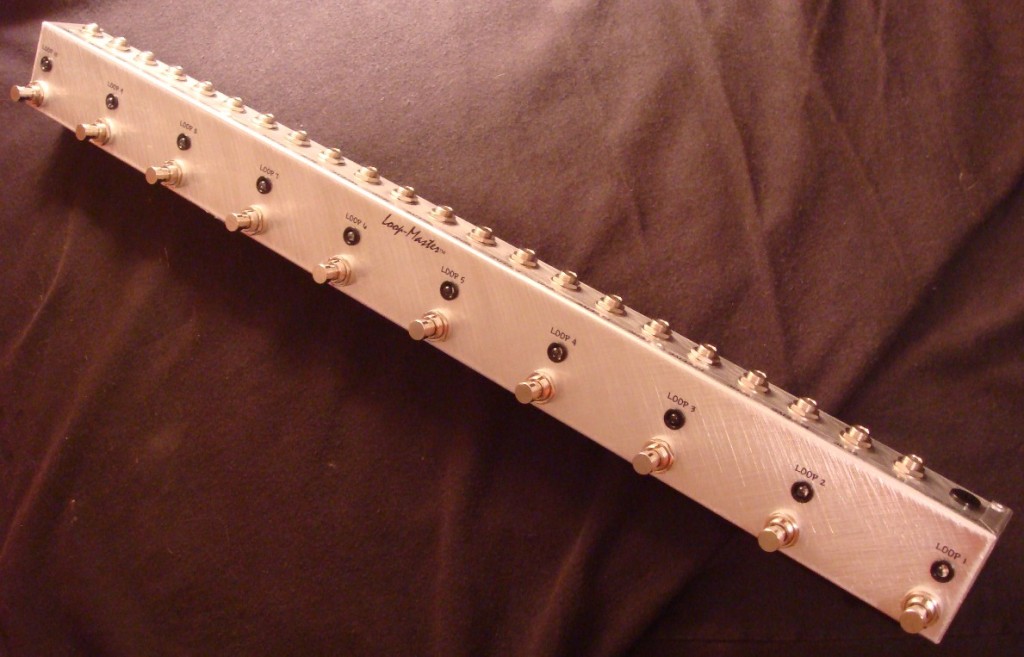
Or… wait a minute… did I just say ‘buying’? Maybe I could as well try to build my own loop switcher? There are numerous schemas of loop switchers all over the internet. Some are simple, like one switch for one loop (not what I need) others are more complex. But one thing I found out: the kind of switcher I’m after will need some form of logic processing. I couldn’t find any schema’s of a programmable switcher that was made solely out of basic hardware components (unless I would build my own IC by soldering together a godzillion number of semiconductor parts).
Now programming logic into a chip is something I haven’t done before. I’ve seen some really smart people do such things, but doing it myself… Maybe a prefab system could be the solution. Just buy some components, solder the things together and done.
Pedalsync
I found exactly what I described above at www.pedalsync.com. On their website they offer a whole bunch of components and modules that should make it possible to create various kinds of controllers, going from TAP-tempo inputs, midi controllers and also loop switchers. Their MV-62 9-switches module, combined with their MV-57 relais bypass module should make it possible to build the unit I’m after.
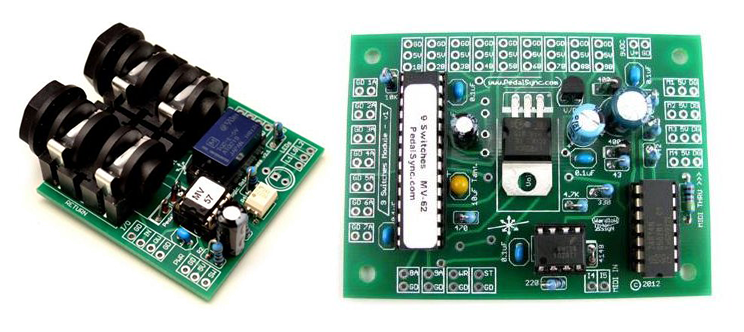
PIC Microcontrollers
Somehow the Pedalsync solutions, although brilliant as a concept, lacked a bit of a challenge (for me). During my search for the perfect pedal switcher I came across various concepts, all with their own specific and sometimes unique features. Obviously, none of them had ALL the features, so I started dreaming… What if the unit I was going to build would be extensible according new insights that emerge when using it. Finetunings or new features? I’ll just hook it up to my computer and inject it with some new logic.
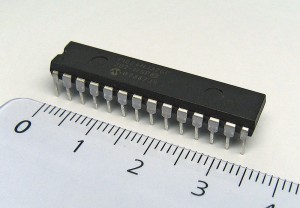
Now I know there are microcontrollers called PIC (Peripheral Interface Controller). These are popular with both industrial developers and hobbyists due to their low cost, wide availability, large user base and (re-)programming capabilities. You get a developer kit, write some logic (in a C-like programming language) and upload it to the controller, which then does exactly what you told it to. More or less…
But PIC controllers are components that require good knowledge of the workings of micro electronics. Not only you need to know how to program them, wiring them up also requires some studying. And although I’m always eager to learn new things, trying to fully understand PIC’s would take me too long and might lead my focus off of designing and building a pedal switcher.
Arduino boards
Luckily for me there are great people all around the world who started initiatives to lower the complexity of microchip programming to the levels of the modest majority. One of these platforms is Arduino. An open-source platform with a fairly simple concept: it offers you digital in- and outputs, analog inputs and the possibility to extend it with numerous other features (ethernet, WiFi, bluetooth, GSM, TFT-displays, motors…). The fact that it is open source makes that new extensions are coming out from various manufacturers every day.
Some browsing through the documentation and the product catalog made it clear that the Arduino Mega 2560 (rev. 3) was the best fit: dimensions are OK and 54 digital ins/outs (digital pins can either be configured as input or output) will ensure extensibility in a later phase.
